1 of 57
Download to read offline
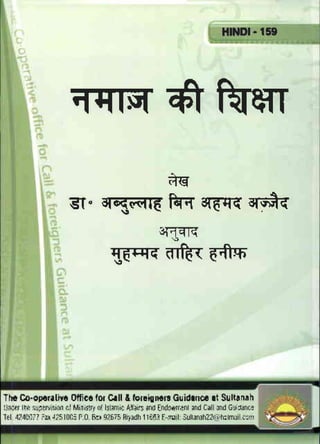
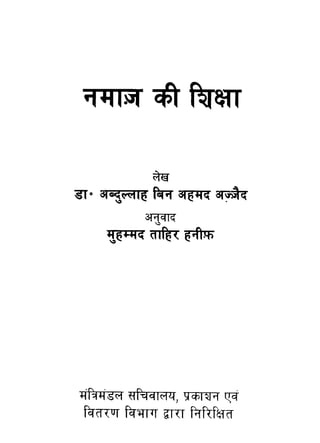

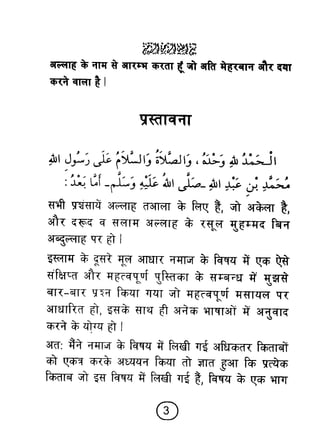
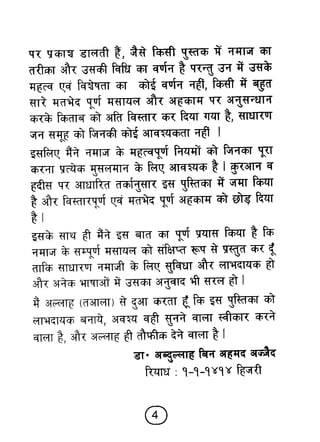
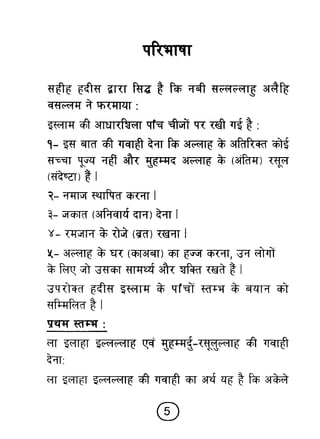
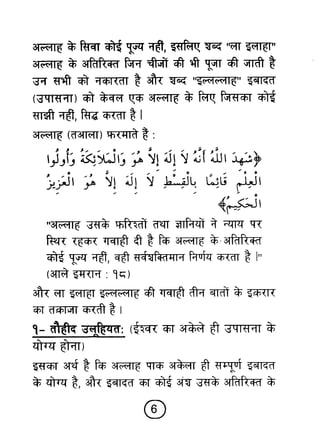
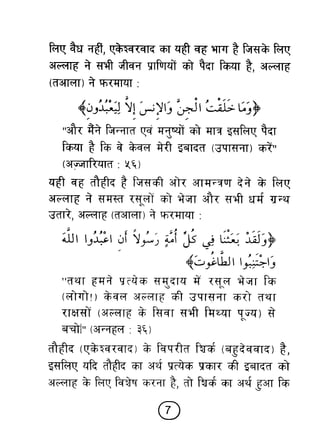
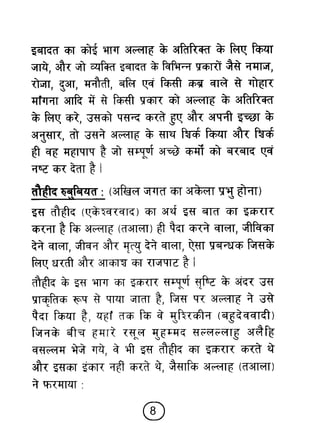
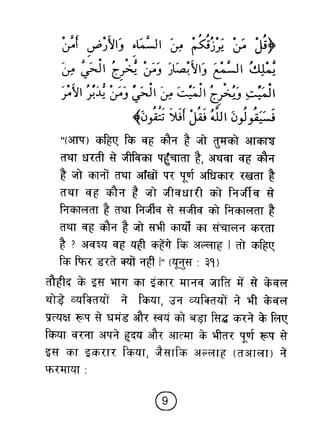
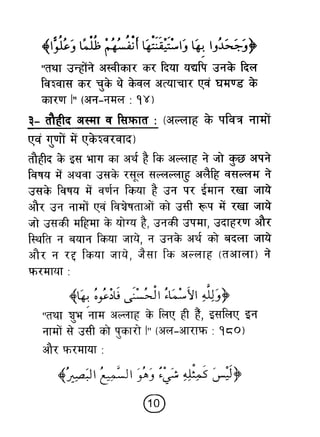
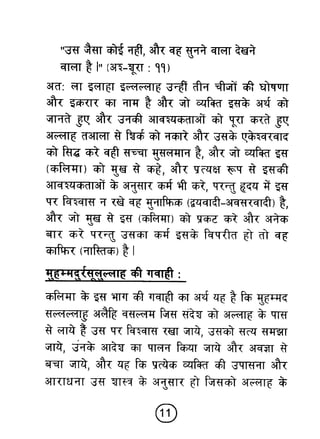
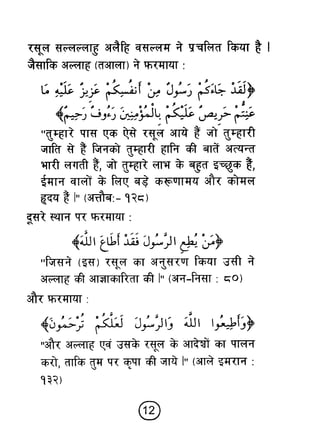
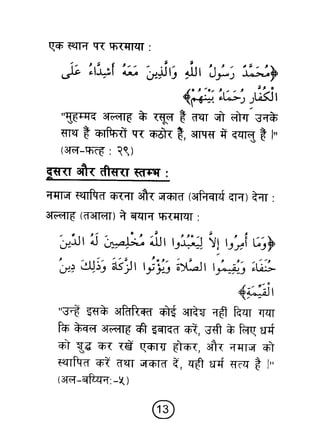
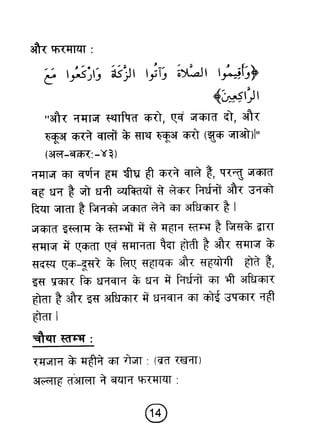
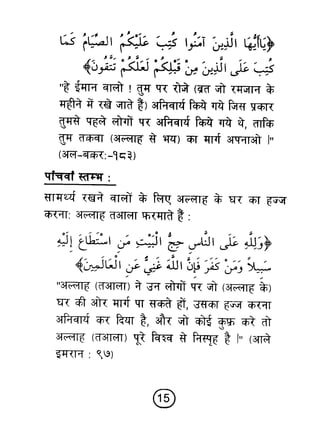
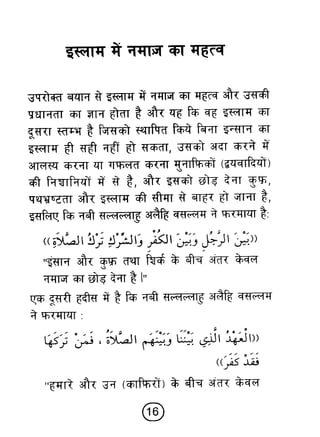



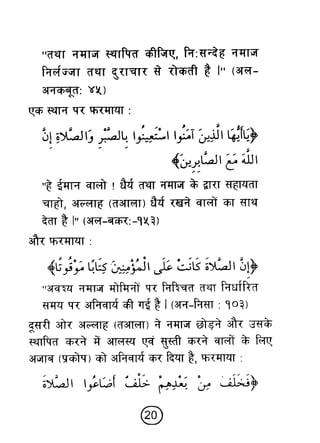
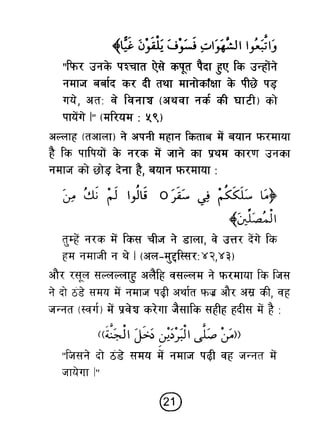

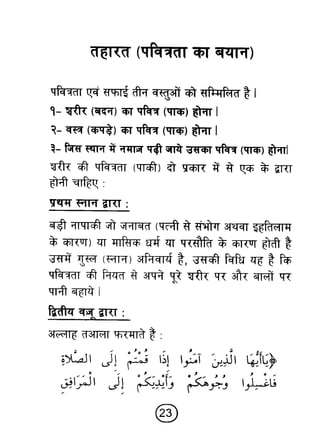
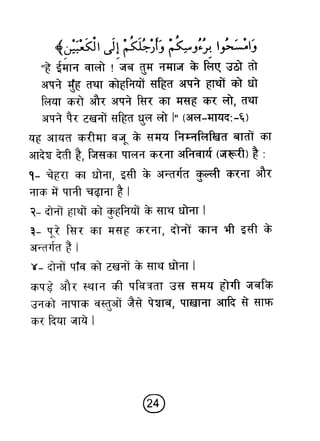
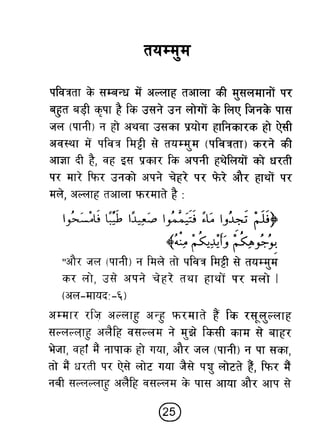
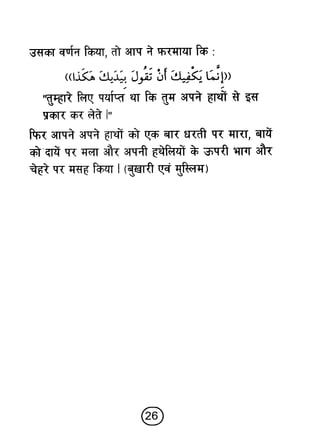

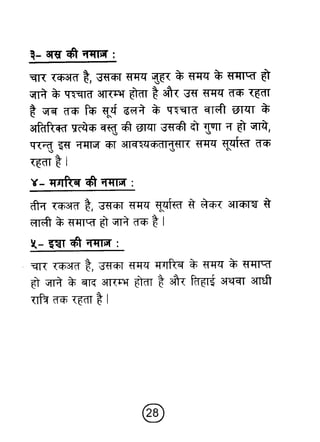
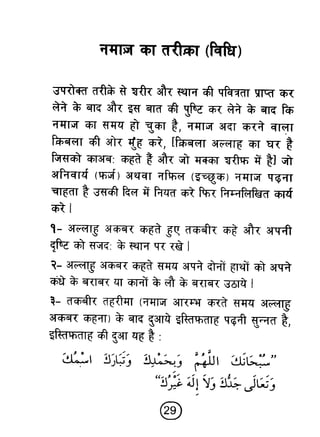
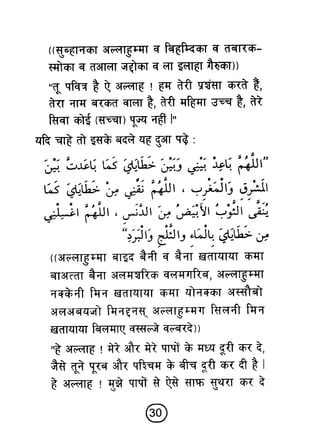
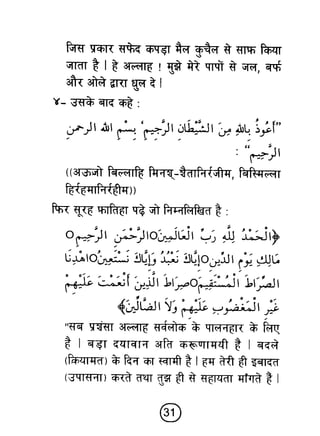
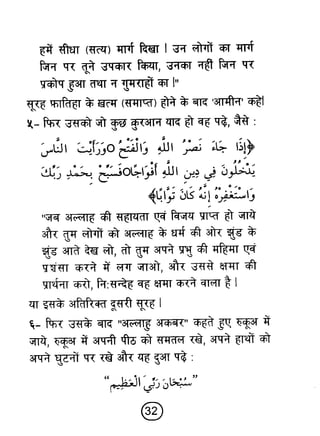

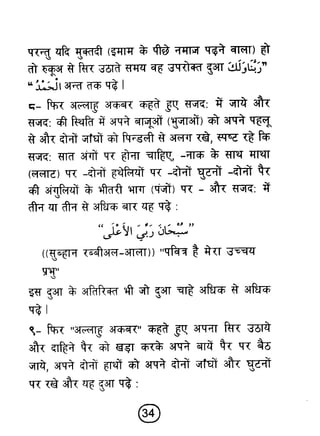
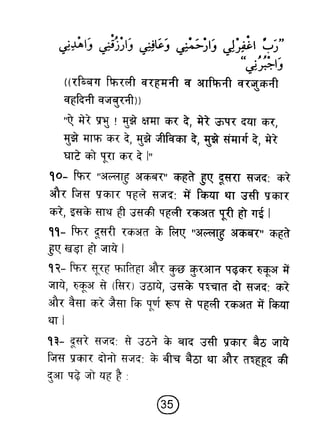
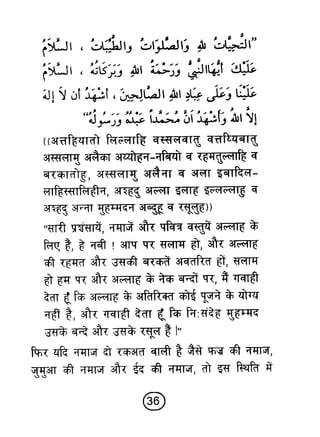
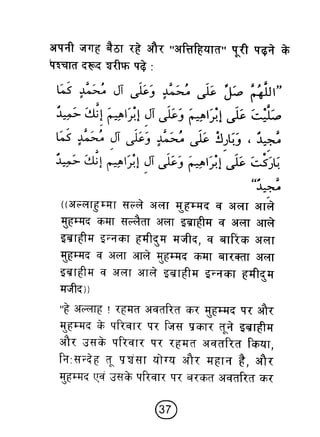
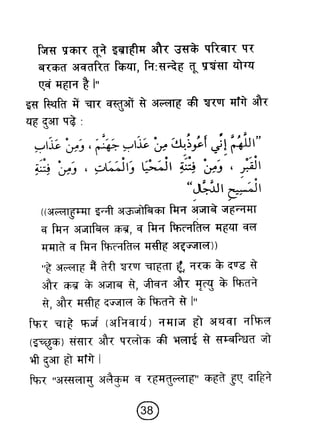
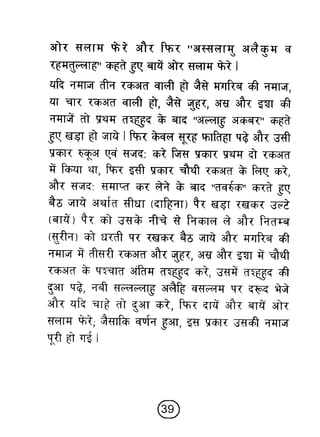

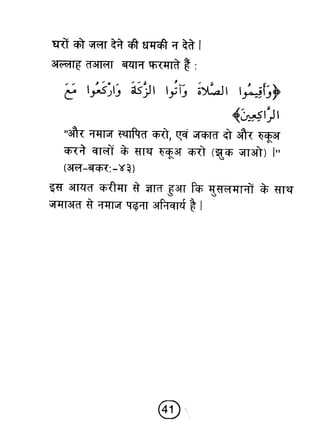
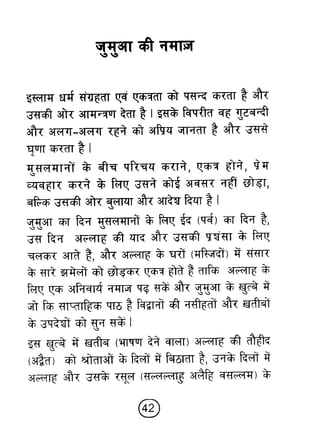
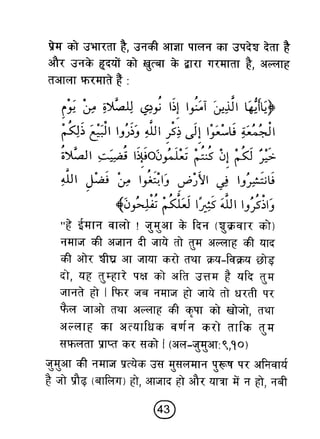



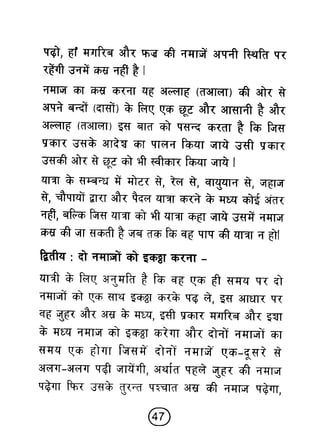
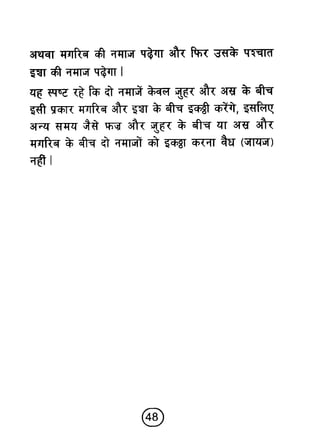



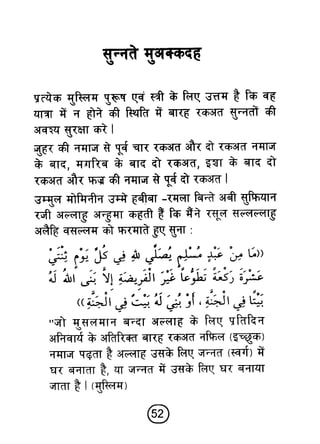



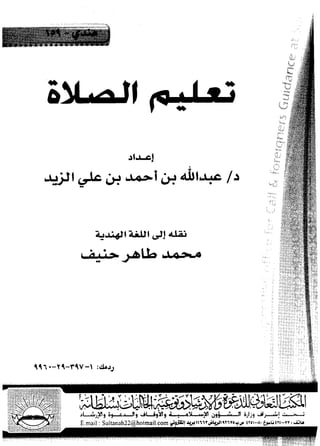
Ad
Recommended
HR / Talent Analytics
HR / Talent AnalyticsAkshay Raje
?
The document discusses HR analytics, covering core concepts, terminologies, and the evolution of business intelligence. It emphasizes the importance of predictive analytics for measuring and managing workforce performance, providing guidance on various analytical models and tools. Real-world case studies illustrate the impact of data-driven decision-making on organizational outcomes, highlighting the need for effective metrics in HR analytics.En womens rights a historical perspective
En womens rights a historical perspectiveHappiness keys
?
This document provides an overview of women's rights from a historical perspective, with a focus on comparing the status of women in major religions and contemporary societies. It discusses how women have been mistreated in many cultures throughout history, manipulated by men while the mistreatment was blamed on religious teachings. The document aims to objectively analyze how Islamic teachings actually promoted women's rights centuries before other societies by restoring dignity and rights.En why people accept islam
En why people accept islamHappiness keys
?
This document discusses reasons why people accept Islam in different regions and eras. It identifies 5 main reasons based on examples from the time of the Prophet Muhammad: 1) The role model of close companions; 2) Responding to the message of Islamic monotheism; 3) Seeking religious truth; 4) Reading the Quran; 5) Marriage to Muslims. Modern surveys in various countries find these same top reasons still apply. The document concludes follow-up is needed to support new converts and their families to prevent leaving the faith.En who is the creator
En who is the creatorHappiness keys
?
The document discusses who or what can be considered the creator. It argues that matter cannot be eternal or the creator for several reasons: 1) Eternity implies everlastingness and self-sufficiency, attributes that matter does not have; 2) Modern science tells us about the nature of matter; 3) The attributes of being all-knowing, all-powerful, etc. that are implied by eternity cannot apply to matter. It then discusses why the creator must be the God of Islam, noting that Islam claims other religions have been distorted over time but the Quran has been preserved. Finally, it provides arguments for why the creator cannot have children.En what is the sunnah
En what is the sunnahHappiness keys
?
The Sunnah refers to everything related from the Prophet Muhammad regarding his statements, actions, tacit approvals, personality, physical description, or biography. It is considered a form of divine revelation from God alongside the Quran. The Sunnah explains and provides details for laws found in the Quran, as well as examples of applying these laws. It held the status of revelation during the Prophet's lifetime and is the second source of Islamic law after the Quran.En what is a miracle
En what is a miracleHappiness keys
?
1) A miracle is defined as an extraordinary act or event contrary to the laws of nature that can only occur through direct intervention from God. Miracles serve to prove the truthfulness and credibility of prophets.
2) Miracles differ from magic, which involves tricks or illusions, and karamahs, which are extraordinary events for righteous believers but not prophets.
3) God granted different miracles to prophets that were relevant and understandable to the people of their time, such as Moses' staff swallowing magicians' tricks and Jesus curing illnesses. The Quran itself is considered the greatest miracle for Muslims.En the pleasures of paradise in brief
En the pleasures of paradise in briefHappiness keys
?
The document summarizes the pleasures of Paradise according to Islamic teachings. It describes Paradise as a place with gardens, rivers, and pleasures beyond human comprehension where believers will live happily and healthily forever. The lowest rank in Paradise will have 10 times the wealth of this world and whatever else they desire. A small space in Paradise would be better than everything in this world. Believers who do good deeds will be admitted to Paradise with its eternal pleasures.En the choice islam and christianity2
En the choice islam and christianity2Happiness keys
?
The document discusses the history of chocolate, describing how it originated from cacao beans grown by the Olmecs and Mayans in Mexico and Central America. It then explains how Spanish conquistadors introduced chocolate to Europe in the 16th century, where it became a popular drink among the elite. The document also notes that chocolate eventually became widely consumed in the form of chocolate bars and candies.En the choice islam and christianity1
En the choice islam and christianity1Happiness keys
?
The document discusses the history of chocolate production and consumption. It details how chocolate originated from cacao beans grown in Central and South America by the Maya and Aztec civilizations. The Spanish introduced chocolate to Europe in the 16th century, where it became a popular drink among the elite. By the 19th century, chocolate had evolved into solid candy bars and was mass produced and marketed around the world.En the book of prayer
En the book of prayerHappiness keys
?
This document provides information about Islamic prayer (salaat) in Islam. It discusses various topics related to prayer including wudu (ablution), ghusl (full body wash), menstruation, tayammum (dry ablution), the timings and types of obligatory prayers, how to perform prayers, things that invalidate prayers, congregational prayers, and other voluntary prayers. The document is intended to serve as a comprehensive guide to the different aspects and rulings pertaining to salaat in Islam.En prohibition of beating women
En prohibition of beating womenHappiness keys
?
The document discusses whether Islam allows or forbids beating women. It notes that Islam takes its laws from the Quran and teachings of Prophet Muhammad. While one hadith suggests Muhammad initially allowed beating, he later clarified to never beat women after many complained of abuse. The Prophet is described as having the best character and never harming women or children. Therefore, the document concludes that based on Islamic sources, beating women is forbidden in Islam.En islam the perfectly complete religion
En islam the perfectly complete religionHappiness keys
?
Ė├╬─ĄĄ╠ų┬█┴╦ėą╣ž▓╗═¼║“čĪ╚╦╝░Ųõ▒│Š░Ą─╣žŽĄą┼ŽóŻ¼▓ó╔µ╝░ėļ┼®ęĄ║═╦«ū╩į┤╣▄└ĒŽÓ╣žĄ─ų„╠ŌĪŻ╬─ĄĄųą╗╣╠ߥĮ┴╦ę╗ą®ėļĘ©┬╔║═╣µČ©ŽÓ╣žĄ──┌╚▌Ż¼╠ž▒╩ŪšļČį╠žČ©╩Ą╩®╦Ą├„Ą─┐╝┬ŪĪŻš¹╠Õ╔ŽŻ¼šŌ╩Ūę╗Ę▌Čįė┌ū╩į┤Ęų┼õ║═╗ĘŠ│╣▄└ĒĄ─ŽĻŽĖ▒©ĖµĪŻEn islam its foundations and concepts
En islam its foundations and conceptsHappiness keys
?
This document provides an introduction to Islam, discussing its foundations and concepts. It begins by noting that mankind has many questions about existence that science cannot fully answer, and that guidance is needed from the true religion revealed by God. It then discusses the oneness and uniqueness of God, noting verses from the Quran that affirm God is one and unlike any other. The document invites readers to follow Islam as the straight path guided by God.En islam and christianity
En islam and christianityHappiness keys
?
The document discusses the benefits of exercise for mental health. Regular physical activity can help reduce anxiety and depression and improve mood and cognitive functioning. Exercise has also been shown to boost self-esteem and can serve as a healthy way to manage stress.En intimate issues
En intimate issuesHappiness keys
?
Islam views marriage and intimacy between spouses as important aspects of a holistic lifestyle that fulfills physical, emotional, and spiritual needs. Sex is encouraged within marriage to cement the spousal bond but prohibited before or outside of marriage. The document outlines Islamic guidelines for intimacy, including only permitting vaginal sex between married partners and prohibiting anal sex or sex during menstruation. It also discusses the importance of sex education and fulfilling each partner's needs, as well as maintaining privacy around intimate matters.En christianity the original and present reality
En christianity the original and present realityHappiness keys
?
This document summarizes the origins and present beliefs of Christianity based on analysis of Christian texts. It discusses three main points:
1) Originally, Christianity taught monotheism and that Jesus was a prophet, consistent with other prophets.
2) There is no evidence Jesus claimed to be the son of God; the term was also used for other prophets and groups.
3) The concept of the Holy Trinity, including Jesus as the second person, cannot be found in the New Testament and contradicts its statements that only God is God. The document aims to analyze Christianity based on its own texts.En can taking a life be justified
En can taking a life be justifiedHappiness keys
?
Taking a life can be justified under Islamic law in only two situations: for murder or for crimes against the community like treason that threaten social stability. The death penalty requires extremely strict evidentiary standards and can only be carried out by a Muslim ruler, not individuals. Islamic law aims to preserve individual rights while maintaining community rights and emphasizes justice, mercy, and forgiveness. Even when called for, the death penalty is meant to be carried out humanely with the promise of forgiveness.En are you ready for islam
En are you ready for islamHappiness keys
?
This document introduces Islam as a solution to many of the problems facing modern societies. It summarizes that while technology has advanced, societies are more confused and uncertain than ever before. Alcohol, drugs, gambling, interest-based economies, and increasing disparity between rich and poor have negatively impacted communities. The document then explains how Islam directly addresses and prohibits these issues through its religious texts and principles of charity. It presents Islamic economic systems and social welfare practices as alternatives that can cure societal ills and ensure greater prosperity, stability, and justice for all.En answers to 7 common questions about islam
En answers to 7 common questions about islamHappiness keys
?
1. Islam is the religion and way of life revealed by God to all prophets including Muhammad. It means submission to God alone through worship and obedience to His law.
2. Muslims are those who freely accept and obey the teachings of Islam, regardless of race or ethnicity. Over 80% of Muslims are not Arab.
3. Allaah is simply the Arabic word for Almighty God, the same God worshipped in Judaism and Christianity. Muslims believe in the one God of all prophets.En alcohol
En alcoholHappiness keys
?
1) Alcohol consumption leads to many social problems and health issues according to statistics from Russia and the United States. It is a major cause of early death, accidents, violence, and family breakdown.
2) A story from the Prophet Muhammad's life illustrates the evil consequences of alcohol when his drunk uncle insulted the Prophet and had unjustly killed someone's camel. The Prophet said "alcohol is the mother of all evils."
3) Islam completely prohibits alcohol consumption and intoxicants because anything that clouds judgment or reduces inhibitions is deemed harmful, even in small amounts. Severe punishment is prescribed in this life and the next for those who produce, sell or consume alcohol.En 3 reasons for god
En 3 reasons for godHappiness keys
?
1) The document provides 3 reasons for believing in God: a) the order and laws seen in the universe point to an intelligent designer, b) the Big Bang had a cause (God) as the first uncaused cause, and c) belief in God comes naturally to human beings and is innate in children.
2) It argues that the order and organization of the universe requires an intelligent organizer like a mobile phone requires a maker. The Big Bang had a cause and that first cause must be timeless, spaceless, and immaterial - attributes of God.
3) Studies show children believe in God without being taught, indicating it is part of human nature, implying God instilled this belief in humanity.Ku tabarok krdn ba aweik halzanrabeit la mooy sari peigambar
Ku tabarok krdn ba aweik halzanrabeit la mooy sari peigambarHappiness keys
?
Ku tabarok krdn ba aweik halzanrabeit la mooy sari peigambar . Ku hokmi aw bawardaray ka tawano gonah dakat
Ku hokmi aw bawardaray ka tawano gonah dakatHappiness keys
?
Ku hokmi aw bawardaray ka tawano gonah dakat . How Psychology Can Power Product Decisions: A Human-Centered Blueprint- Shray...
How Psychology Can Power Product Decisions: A Human-Centered Blueprint- Shray...ShrayasiRoy
?
In an era where users are bombarded with endless choices, capturing attention and driving meaningful engagement isn't just about building features Ī¬ it's about understanding what drives human behavior at its core. This presentation offers a deep dive into how psychological principles can inform smarter, more intuitive product decisions. ItĪ»s not just theory Ī¬ itĪ»s a hands-on blueprint for applying human-centered thinking at every stage of product development.
Grounded in behavioral science, consumer psychology, and cognitive design, this deck unpacks the key psychological drivers behind user motivation, decision-making, emotional engagement, and habit formation. From attention economics and dopamine-driven interactions to trust cues, loss aversion, and the paradox of choice Ī¬ you'll see how to harness what the mind naturally does to build digital products people donĪ»t just useĪŁ they return to, talk about, and even advocate for.
WeĪ»ll explore:
Cognitive biases that shape user perception and choices Ī¬ and how to use them to your advantage without crossing ethical lines.
Emotional design principles that build trust, trigger desire, and turn features into feelings.
User behavior loops that build stickiness, deepen retention, and create emotional investments.
Psychological friction Ī¬ when to reduce it for conversion, and when to add it for intentionality.
Dark patterns vs. ethical persuasion Ī¬ the thin line between influence and manipulation.
A/B testing with a psychological lens Ī¬ learning not just what works, but why it works.
This is more than UX research or product marketing fluff. ItĪ»s a call to build with empathy, backed by science, and sharpened by real-world product thinking. Whether youĪ»re shaping onboarding flows, gamifying engagement, designing pricing models, or rethinking retention strategies Ī¬ this deck will arm you with a new lens: the human mind.
Perfect for product managers, growth strategists, UX designers, behavioral scientists, and anyone serious about building products that resonate, retain, and inspire action.
Because at the heart of every great productĪŁ is a human.
LetĪ»s start building for the brain Ī¬ not just the screen.More Related Content
More from Happiness keys (20)
En the pleasures of paradise in brief
En the pleasures of paradise in briefHappiness keys
?
The document summarizes the pleasures of Paradise according to Islamic teachings. It describes Paradise as a place with gardens, rivers, and pleasures beyond human comprehension where believers will live happily and healthily forever. The lowest rank in Paradise will have 10 times the wealth of this world and whatever else they desire. A small space in Paradise would be better than everything in this world. Believers who do good deeds will be admitted to Paradise with its eternal pleasures.En the choice islam and christianity2
En the choice islam and christianity2Happiness keys
?
The document discusses the history of chocolate, describing how it originated from cacao beans grown by the Olmecs and Mayans in Mexico and Central America. It then explains how Spanish conquistadors introduced chocolate to Europe in the 16th century, where it became a popular drink among the elite. The document also notes that chocolate eventually became widely consumed in the form of chocolate bars and candies.En the choice islam and christianity1
En the choice islam and christianity1Happiness keys
?
The document discusses the history of chocolate production and consumption. It details how chocolate originated from cacao beans grown in Central and South America by the Maya and Aztec civilizations. The Spanish introduced chocolate to Europe in the 16th century, where it became a popular drink among the elite. By the 19th century, chocolate had evolved into solid candy bars and was mass produced and marketed around the world.En the book of prayer
En the book of prayerHappiness keys
?
This document provides information about Islamic prayer (salaat) in Islam. It discusses various topics related to prayer including wudu (ablution), ghusl (full body wash), menstruation, tayammum (dry ablution), the timings and types of obligatory prayers, how to perform prayers, things that invalidate prayers, congregational prayers, and other voluntary prayers. The document is intended to serve as a comprehensive guide to the different aspects and rulings pertaining to salaat in Islam.En prohibition of beating women
En prohibition of beating womenHappiness keys
?
The document discusses whether Islam allows or forbids beating women. It notes that Islam takes its laws from the Quran and teachings of Prophet Muhammad. While one hadith suggests Muhammad initially allowed beating, he later clarified to never beat women after many complained of abuse. The Prophet is described as having the best character and never harming women or children. Therefore, the document concludes that based on Islamic sources, beating women is forbidden in Islam.En islam the perfectly complete religion
En islam the perfectly complete religionHappiness keys
?
Ė├╬─ĄĄ╠ų┬█┴╦ėą╣ž▓╗═¼║“čĪ╚╦╝░Ųõ▒│Š░Ą─╣žŽĄą┼ŽóŻ¼▓ó╔µ╝░ėļ┼®ęĄ║═╦«ū╩į┤╣▄└ĒŽÓ╣žĄ─ų„╠ŌĪŻ╬─ĄĄųą╗╣╠ߥĮ┴╦ę╗ą®ėļĘ©┬╔║═╣µČ©ŽÓ╣žĄ──┌╚▌Ż¼╠ž▒╩ŪšļČį╠žČ©╩Ą╩®╦Ą├„Ą─┐╝┬ŪĪŻš¹╠Õ╔ŽŻ¼šŌ╩Ūę╗Ę▌Čįė┌ū╩į┤Ęų┼õ║═╗ĘŠ│╣▄└ĒĄ─ŽĻŽĖ▒©ĖµĪŻEn islam its foundations and concepts
En islam its foundations and conceptsHappiness keys
?
This document provides an introduction to Islam, discussing its foundations and concepts. It begins by noting that mankind has many questions about existence that science cannot fully answer, and that guidance is needed from the true religion revealed by God. It then discusses the oneness and uniqueness of God, noting verses from the Quran that affirm God is one and unlike any other. The document invites readers to follow Islam as the straight path guided by God.En islam and christianity
En islam and christianityHappiness keys
?
The document discusses the benefits of exercise for mental health. Regular physical activity can help reduce anxiety and depression and improve mood and cognitive functioning. Exercise has also been shown to boost self-esteem and can serve as a healthy way to manage stress.En intimate issues
En intimate issuesHappiness keys
?
Islam views marriage and intimacy between spouses as important aspects of a holistic lifestyle that fulfills physical, emotional, and spiritual needs. Sex is encouraged within marriage to cement the spousal bond but prohibited before or outside of marriage. The document outlines Islamic guidelines for intimacy, including only permitting vaginal sex between married partners and prohibiting anal sex or sex during menstruation. It also discusses the importance of sex education and fulfilling each partner's needs, as well as maintaining privacy around intimate matters.En christianity the original and present reality
En christianity the original and present realityHappiness keys
?
This document summarizes the origins and present beliefs of Christianity based on analysis of Christian texts. It discusses three main points:
1) Originally, Christianity taught monotheism and that Jesus was a prophet, consistent with other prophets.
2) There is no evidence Jesus claimed to be the son of God; the term was also used for other prophets and groups.
3) The concept of the Holy Trinity, including Jesus as the second person, cannot be found in the New Testament and contradicts its statements that only God is God. The document aims to analyze Christianity based on its own texts.En can taking a life be justified
En can taking a life be justifiedHappiness keys
?
Taking a life can be justified under Islamic law in only two situations: for murder or for crimes against the community like treason that threaten social stability. The death penalty requires extremely strict evidentiary standards and can only be carried out by a Muslim ruler, not individuals. Islamic law aims to preserve individual rights while maintaining community rights and emphasizes justice, mercy, and forgiveness. Even when called for, the death penalty is meant to be carried out humanely with the promise of forgiveness.En are you ready for islam
En are you ready for islamHappiness keys
?
This document introduces Islam as a solution to many of the problems facing modern societies. It summarizes that while technology has advanced, societies are more confused and uncertain than ever before. Alcohol, drugs, gambling, interest-based economies, and increasing disparity between rich and poor have negatively impacted communities. The document then explains how Islam directly addresses and prohibits these issues through its religious texts and principles of charity. It presents Islamic economic systems and social welfare practices as alternatives that can cure societal ills and ensure greater prosperity, stability, and justice for all.En answers to 7 common questions about islam
En answers to 7 common questions about islamHappiness keys
?
1. Islam is the religion and way of life revealed by God to all prophets including Muhammad. It means submission to God alone through worship and obedience to His law.
2. Muslims are those who freely accept and obey the teachings of Islam, regardless of race or ethnicity. Over 80% of Muslims are not Arab.
3. Allaah is simply the Arabic word for Almighty God, the same God worshipped in Judaism and Christianity. Muslims believe in the one God of all prophets.En alcohol
En alcoholHappiness keys
?
1) Alcohol consumption leads to many social problems and health issues according to statistics from Russia and the United States. It is a major cause of early death, accidents, violence, and family breakdown.
2) A story from the Prophet Muhammad's life illustrates the evil consequences of alcohol when his drunk uncle insulted the Prophet and had unjustly killed someone's camel. The Prophet said "alcohol is the mother of all evils."
3) Islam completely prohibits alcohol consumption and intoxicants because anything that clouds judgment or reduces inhibitions is deemed harmful, even in small amounts. Severe punishment is prescribed in this life and the next for those who produce, sell or consume alcohol.En 3 reasons for god
En 3 reasons for godHappiness keys
?
1) The document provides 3 reasons for believing in God: a) the order and laws seen in the universe point to an intelligent designer, b) the Big Bang had a cause (God) as the first uncaused cause, and c) belief in God comes naturally to human beings and is innate in children.
2) It argues that the order and organization of the universe requires an intelligent organizer like a mobile phone requires a maker. The Big Bang had a cause and that first cause must be timeless, spaceless, and immaterial - attributes of God.
3) Studies show children believe in God without being taught, indicating it is part of human nature, implying God instilled this belief in humanity.Ku tabarok krdn ba aweik halzanrabeit la mooy sari peigambar
Ku tabarok krdn ba aweik halzanrabeit la mooy sari peigambarHappiness keys
?
Ku tabarok krdn ba aweik halzanrabeit la mooy sari peigambar . Ku hokmi aw bawardaray ka tawano gonah dakat
Ku hokmi aw bawardaray ka tawano gonah dakatHappiness keys
?
Ku hokmi aw bawardaray ka tawano gonah dakat . Recently uploaded (20)
How Psychology Can Power Product Decisions: A Human-Centered Blueprint- Shray...
How Psychology Can Power Product Decisions: A Human-Centered Blueprint- Shray...ShrayasiRoy
?
In an era where users are bombarded with endless choices, capturing attention and driving meaningful engagement isn't just about building features Ī¬ it's about understanding what drives human behavior at its core. This presentation offers a deep dive into how psychological principles can inform smarter, more intuitive product decisions. ItĪ»s not just theory Ī¬ itĪ»s a hands-on blueprint for applying human-centered thinking at every stage of product development.
Grounded in behavioral science, consumer psychology, and cognitive design, this deck unpacks the key psychological drivers behind user motivation, decision-making, emotional engagement, and habit formation. From attention economics and dopamine-driven interactions to trust cues, loss aversion, and the paradox of choice Ī¬ you'll see how to harness what the mind naturally does to build digital products people donĪ»t just useĪŁ they return to, talk about, and even advocate for.
WeĪ»ll explore:
Cognitive biases that shape user perception and choices Ī¬ and how to use them to your advantage without crossing ethical lines.
Emotional design principles that build trust, trigger desire, and turn features into feelings.
User behavior loops that build stickiness, deepen retention, and create emotional investments.
Psychological friction Ī¬ when to reduce it for conversion, and when to add it for intentionality.
Dark patterns vs. ethical persuasion Ī¬ the thin line between influence and manipulation.
A/B testing with a psychological lens Ī¬ learning not just what works, but why it works.
This is more than UX research or product marketing fluff. ItĪ»s a call to build with empathy, backed by science, and sharpened by real-world product thinking. Whether youĪ»re shaping onboarding flows, gamifying engagement, designing pricing models, or rethinking retention strategies Ī¬ this deck will arm you with a new lens: the human mind.
Perfect for product managers, growth strategists, UX designers, behavioral scientists, and anyone serious about building products that resonate, retain, and inspire action.
Because at the heart of every great productĪŁ is a human.
LetĪ»s start building for the brain Ī¬ not just the screen.An Analysis Of The Pearl Short Story By John Steinbeck
An Analysis Of The Pearl Short Story By John SteinbeckBillyDarmawan3
?
John Steinbeck Popular Short Story
The Pearl adalah sebuah novella yang ditulis oleh John Steinbeck yang mengisahkan perjuangan seorang nelayan miskin bernama Kino dan istrinya, Juana, yang hidup sederhana di sebuah desa kecil Meksiko. Suatu hari, Kino menemukan sebuah mutiara raksasa Ī¬ "the Pearl of the World" Ī¬ yang diyakini akan mengubah nasib mereka.
Namun, alih-alih membawa kebahagiaan, mutiara itu justru menimbulkan keserakahan, kekerasan, dan penderitaan. Masyarakat di sekitarnya mulai menunjukkan niat jahat, dan bahkan keluarga Kino sendiri terjebak dalam konflik batin antara harapan dan kehancuran. Pada akhirnya, The Pearl menjadi simbol ironi: sesuatu yang tampak sebagai berkah berubah menjadi kutukan.
Melalui cerita ini, Steinbeck mengeksplorasi tema keserakahan, harapan, kemiskinan, dan ketimpangan sosial. Dengan gaya narasi yang lugas namun penuh makna simbolik, The Pearl menjadi refleksi tajam tentang sifat manusia dan dampak tragis dari keinginan yang tak terkendali.
Introductory Material for Markov-chain Description of Abzymes Catalysis
Introductory Material for Markov-chain Description of Abzymes CatalysisOrchidea Maria Lecian
?
speaker: Orchidea Maria Lecian
Authors: Orchidea Maria Lecian, seergey Suchkov
Title: Introductory Material for
Markov-chain Description of Abzymes Catalysis
Talk presented at the International Symposium on
Public Health and Epidemiology and
Immunology Research
12-13 June 2025, Rome, Italy on 13 June 2025.Matt Ridley: Economic Evolution and Ideas that have Sex
Matt Ridley: Economic Evolution and Ideas that have SexConservative Institute / Konzervat©¬vny in?tit©▓t M. R. ?tef©ónika
?
Matt Ridley is a British independent science popularizer, journalist, entrepreneur, and author of several bestselling books, for which he has received numerous awards. He focuses primarily on the economic, biological, and environmental dimensions of the spontaneous functioning and advancement of human society. Role of Glutamate, glutamine and Alanine in Transport of Ammonia in Tissues
Role of Glutamate, glutamine and Alanine in Transport of Ammonia in TissuesTayyab
?
This slide explains the roles of Glutamate, Glutamine, and Alanine in safely transporting toxic ammonia from tissues to the liver and kidneys, where it is detoxified or excreted."Science 8 Quarter 4 first quiz digestive system.docx
Science 8 Quarter 4 first quiz digestive system.docxjunefermunez
?
Quiz for the topic Digestive System. 4th QaurterOperationalising OGC Processes with Application Packages in ILIAD: A Service ...
Operationalising OGC Processes with Application Packages in ILIAD: A Service ...Marco Amaro Oliveira
?
This contribution presents the integration of the EO Application Package model into the ILIAD Digital Twin of the Ocean architecture, using the OGC API Processes DRU specification. Built on the EOEPCA framework and OGC best practices and specifications, the approach enables standardized, containerized EO applications packaged with CWL to run across a wide range of infrastructures including Kubernetes and HPC. These applications are already in use across several platforms, and in ILIAD they have been applied to models such as oil spill forecasting, aquaculture, wave energy, and ship routing.
The EDITO platform supports OGC API Processes but is currently optimized for simpler workflows using environment variables. To enhance compatibility with EO Application Packages, ILIAD introduces a Kubernetes-based ADES implementation, enabling dynamic execution and integration with EDITO's object store and metadata catalog. The experience is also informing the evolution of the OGC Best Practice, and practical solutions for bridging architectural gaps will be discussed.Citizen Science and Science communication
Citizen Science and Science communicationtarhanhatice0101
?
Science communication using citizen scientistsTISSUE TRANSPLANTATTION and IT'S IMPORTANCE IS DISCUSSED
TISSUE TRANSPLANTATTION and IT'S IMPORTANCE IS DISCUSSEDPhoebeAkinyi1
?
Tissue transplant in immunologyCloud Collaboration Market Challenges, Drivers, Trends, and Forecast by 2031
Cloud Collaboration Market Challenges, Drivers, Trends, and Forecast by 2031moresonali406
?
The report is segmented by Component (Solution, Service); Deployment (Private Cloud, Public Cloud, Hybrid Cloud); Organization Size (Large Enterprises, Small and Medium Enterprises (SMEs)); Vertical (BFSI, Consumer Goods And Retail, Education, Government and Public Sector, Healthcare and Life Sciences, Manufacturing, Media and Entertainment, Telecommunication and ITES, Others). The global analysis is further broken-down at regional level and major countries. The report offers the value in USD for the above analysis and segmentsHOW TO FACE THREATS FROM THE FORCES OF NATURE EXISTING ON PLANET EARTH.pdf
HOW TO FACE THREATS FROM THE FORCES OF NATURE EXISTING ON PLANET EARTH.pdfFaga1939
?
This article aims to present how to deal with localized or global threats to human beings caused by the forces of nature that exist on planet Earth. The threats to human beings caused by the forces of nature that exist on planet Earth include earthquakes and tsunamis that can affect specific areas of the planet, volcanic eruptions that can affect specific areas of the planet or have a global impact, the cooling of the Earth's core and the inversion of the Earth's magnetic poles, both of which have a global impact. Specific measures are proposed to deal with each of the threats, but in addition to these, it is necessary to create a global structure, a World Organization for Defense Against Natural Disasters with global scope linked to the UN (United Nations) that has the capacity to technically coordinate the actions of countries around the world in dealing with these threats. The creation of this body is absolutely necessary because most of the threats from the forces of nature that exist on planet Earth have a global impact. To carry out its functions, this body must have financial resources from a global fund against natural disasters of global scope to be maintained by all countries on the planet and administered by the UN.MOLD -GENERAL CHARACTERISTICS AND CLASSIFICATION
MOLD -GENERAL CHARACTERISTICS AND CLASSIFICATIONaparnamp966
?
This is a brief note on types of organism on food with special focus on molds. This includes their general characteristics, spores; their classification, mycotoxins, and how the molds affect food. THE CIRCULATORY SYSTEM GRADE 9 SCIENCE.pptx
THE CIRCULATORY SYSTEM GRADE 9 SCIENCE.pptxroselyncatacutan
?
The Circulatory System Grade 9 Science Quarter 1 Week 1Science Holiday Homework (interesting slide )
Science Holiday Homework (interesting slide )aryanxkohli88
?
science holiday homework
good for childrenMatt Ridley: Economic Evolution and Ideas that have Sex
Matt Ridley: Economic Evolution and Ideas that have SexConservative Institute / Konzervat©¬vny in?tit©▓t M. R. ?tef©ónika
?
Operationalising OGC Processes with Application Packages in ILIAD: A Service ...
Operationalising OGC Processes with Application Packages in ILIAD: A Service ...Marco Amaro Oliveira
?
Ad
